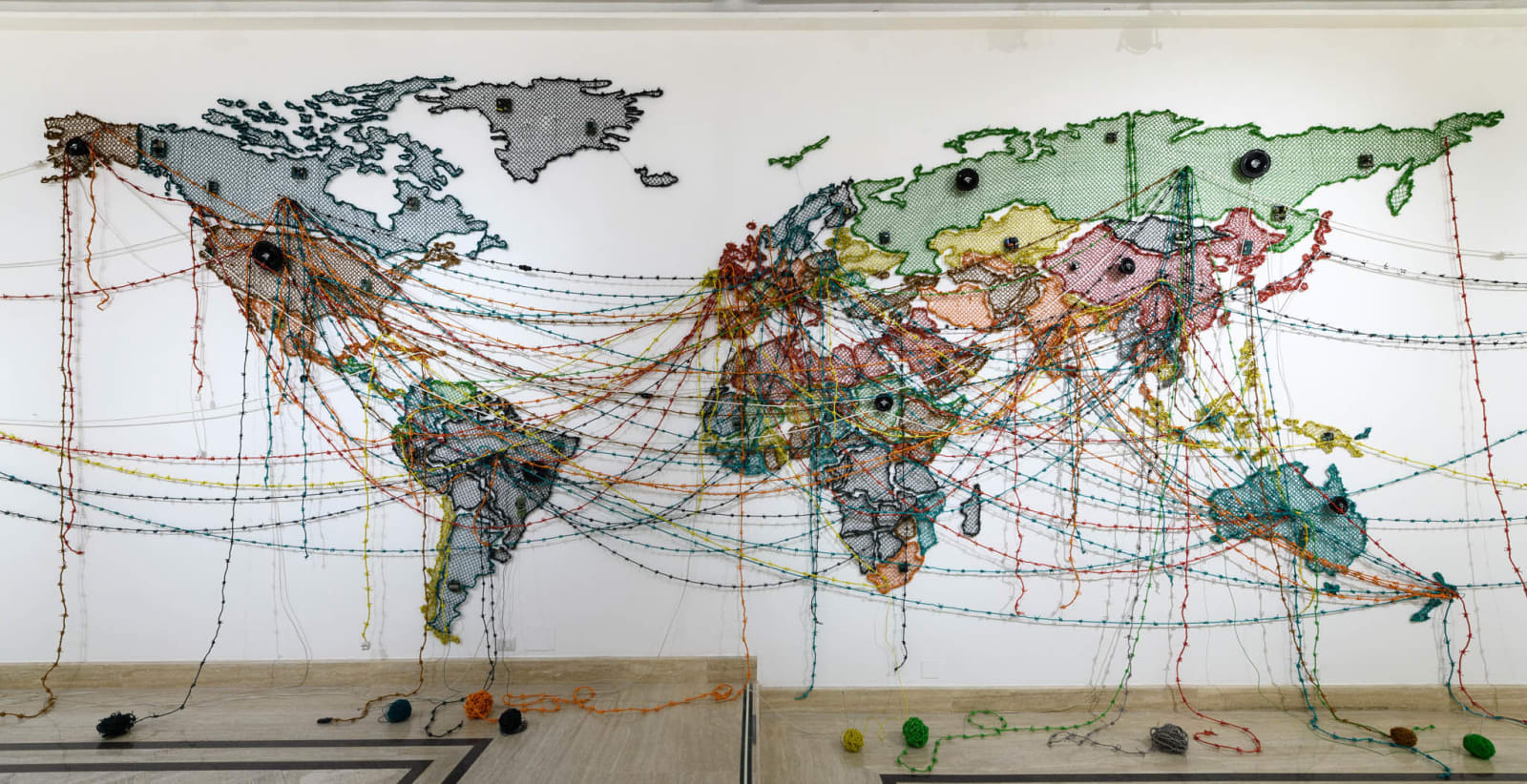Reena Saini KALLAT Indian, b. 1973
Single channel audio (10 min.)
diverse content. This iteration shows the impact of human activity on the environment using a
colour code to represent the ecological footprint of each country. The ecological footprint is
determined here by how much land and water a population requires to produce the resources it
consumes, and by the rate at which the waste generated in the process can be naturally recycled
to produce new resources. When a population’s ecological footprint exceeds its biocapacity, it
results in a biocapacity deficit in that region, signifying an “ecological deficit”. This occurs when the
demand for goods and services that the land and seas can produce is greater than what the
region’s ecosystems can regenerate. If, however, the carbon footprint of a region is smaller than
its biocapacity, that means that the people there consume less resources than their biosphere
regenerates and absorbs. This is referred to as an “ecological credit”. Through this visualization of
ecological debtors and creditors, the Global Footprint Network aims to stimulate a dialogue about
the growing significance of biocapacity. In the installation, the map distinguishes between the high
standard of living in the Global North and the comparatively lower standard in the South.
Interestingly, this particular scale reverses the conventional roles as it reveals that the South is
performing relatively well in terms of biocapacity, while the Global North exhibits a significantly
larger ecological footprint in comparison to its biocapacity.
Exhibitions
2025 What The Sky Won't Say The Ground Will, Richard Saltoun Gallery Rome2023 Deep Rivers Run Quiet, Kunstmuseum Thun, Switzerland
2023 Back to the Roots, Kunstverein Reutlingen, Germany
